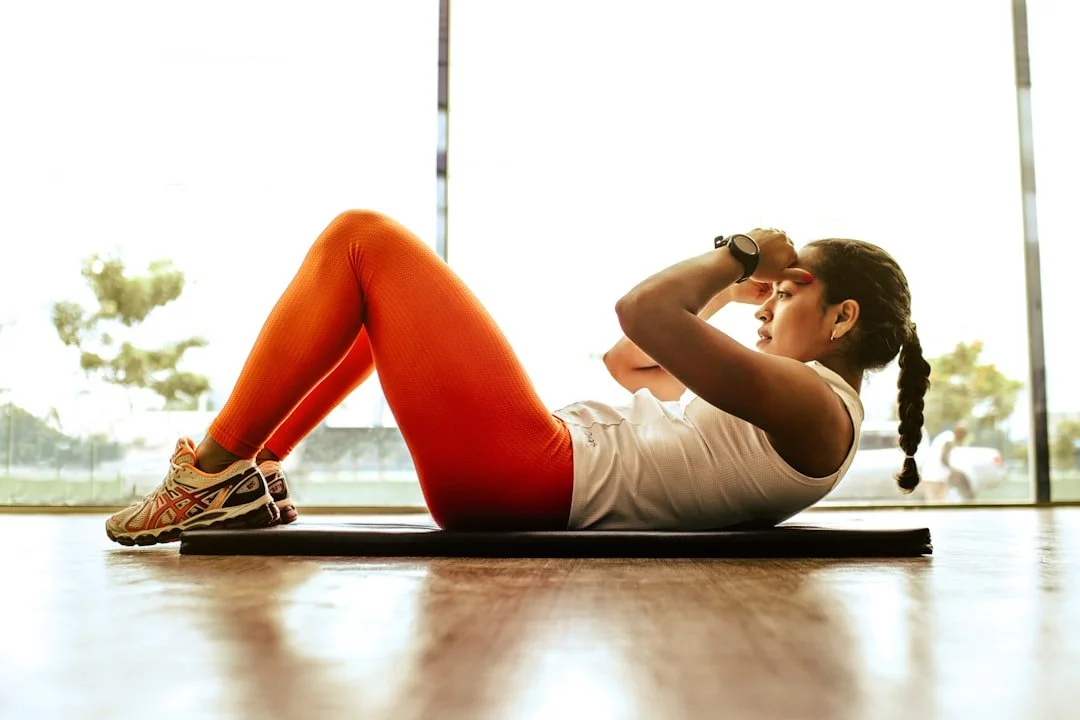Ski Season Conditioning: Personal Training Tips for Denver Athletes
By Brett Green, PT, DPT • 2025-09-30
Denver's unique training environment: 5,280 feet of natural altitude conditioning
Here's what happened last season: I watched a patient—let's call him Mike—tear his ACL on day two at Vail. Strong guy, hits the gym regularly, ran a half marathon that fall. His exact words after surgery? "I thought I was in shape."
Here's the thing: Running shape isn't skiing shape. And gym strong isn't mountain strong.
Denver athletes have a secret weapon most skiers don't—year-round access to elevation, varied terrain, and conditions that mirror what we'll face on the slopes. But most people treat ski conditioning like cramming for finals, starting their "pre-season" in October.
We can do better.
The Mile-High Advantage: Why Denver Changes Everything
Training at altitude isn't just about thin air—it's about preparing your body for the specific demands of Colorado skiing. When I work with athletes here, we're not just building strength. We're building mountain-ready resilience.
What makes Denver conditioning different:
Altitude adaptation - Your heart and lungs work harder by default
Weather variability - Your body adapts to temperature and pressure changes
Terrain access - Hiking 14ers builds the exact muscle patterns skiing demands
Year-round training - No off-season means no fitness decay
The Problem with Traditional "Ski Fitness"
Most ski conditioning programs are designed for sea-level athletes training in controlled environments. They focus on isolated movements instead of integrated systems. They miss the neuromuscular complexity that skiing actually demands.
Real talk: Doing leg press and calling it ski conditioning is like practicing free throws and expecting to dominate in pickup basketball. The movement patterns don't transfer.
Your Year-Round Conditioning Blueprint
Instead of cramming, we're going to build ski-specific fitness systematically, leveraging Denver's unique advantages every step of the way.
Phase 1: Base Building (May-July)
Duration: 12 weeks
Focus: Aerobic capacity and movement foundation
Denver advantage: Perfect hiking weather
The foundation principle: Your aerobic system powers everything. Poor aerobic fitness = early fatigue = sloppy technique = injury risk.
Week 1-4: Aerobic Development
2-3 hiking sessions per week: Start with moderate trails (3-5 miles)
Target zones: Stay in Zone 1-2 (conversational pace)
Progressive overload: Add 15-20 minutes of hiking time weekly
Denver-specific hack: Use our elevation changes as natural interval training. Uphill sections develop power, downhill sections train eccentric control—exactly what skiing demands.
Week 5-8: Strength Foundation
Add 2x per week strength training while maintaining hiking volume:
Goblet squats: 3 sets x 12-15 reps
Single-leg deadlifts: 3 sets x 8 per leg
Lateral lunges: 3 sets x 10 per leg
Turkish get-ups: 2 sets x 3 per side
Week 9-12: Integration
Combine hiking with bodyweight exercises on the trail:
Trail workout: Every 10 minutes, stop for 1 minute of squats, lunges, or step-ups
Summit challenges: Use rocks and logs for functional strength work
Building lower leg strength that translates directly to ski performance
Phase 2: Power Development (August-October)
Duration: 12 weeks
Focus: Explosive power and reactive strength
Denver advantage: Peak hiking season with varied terrain
This is where Denver athletes separate themselves. While coastal skiers are stuck in gyms, we're developing real-world power on actual mountains.
Week 13-16: Plyometric Foundation
Box jumps: Focus on soft landings, not height
Lateral bounds: 3 sets x 6 per direction
Depth jumps: Step down from 12-inch box, land softly
Continue hiking: 2-3x per week, add steeper terrain
Key insight: The eccentric (landing) phase is more important than the jump itself. Skiing is essentially controlled falling—your legs need to handle massive deceleration forces.
Week 17-20: Sport-Specific Power
Single-leg bounds: Develop unilateral power
Lateral step-ups with knee drive: Explosive lateral movement
Skater hops: Chain lateral movements together
Advanced hiking: Scrambling and off-trail terrain
Week 21-24: Peak Power Phase
Altitude sprints: Short hill sprints at elevation
Reactive jumping: Jump and land based on external cues
Agility ladder: Quick feet and direction changes
Technical hiking: Practice balance on challenging terrain
Peak power development using Colorado's natural terrain
Phase 3: Ski-Specific Integration (November-December)
Duration: 8 weeks
Focus: Movement refinement and mental preparation
Denver advantage: Early season access
This phase is about fine-tuning. Your fitness is built—now we're optimizing movement patterns and building confidence.
The Pre-Season Checklist
Movement Screen (test yourself monthly): ☐ Single-leg squat: 15 reps each leg, no wobble
☐ Lateral bound and stick: 3 feet distance, hold 3 seconds
☐ Y-balance test: Reach 90% of leg length in all directions
☐ Carioca drill: 20 steps each direction, fluid movement
☐ Single-leg hop series: Forward, lateral, backward hops
If these feel challenging, start with easier terrain and build confidence gradually.
The Psychology of Peak Performance
Here's what I've learned working with hundreds of Denver athletes: confidence on the mountain starts with confidence in your training.
When you know you've done the work—not just for 8 weeks, but systematically over months—your relationship with the mountain changes. You're not hoping your body holds up. You know it will.
Mental Training Integration
Visualization during workouts: Picture perfect ski runs during strength training
Stress inoculation: Practice focus during high-intensity intervals
Progressive overload mindset: If you conquered that 14er in July, you can handle anything the resort throws at you
Denver-Specific Training Hacks
Use Our Weather
Snow delays? Perfect balance training day.
Wind advisories? Stability and core work indoors.
Bluebird days? High-intensity outdoor training for mental toughness.
Leverage Local Resources
Red Rocks: Natural agility course and mental training
Cherry Creek Trail: Long, steady-state cardio with elevation changes
Flatirons: Technical movement and fear management
Highlands trails: Power hiking with city convenience
The Altitude Advantage
Training at 5,280 feet means your VO2 max is naturally enhanced. When you get to the mountains (8,000-12,000+ feet), the adaptation curve is gentler because you're already acclimatized to reduced oxygen.
Practical application: Your "easy" pace here becomes powerful base fitness at sea level. Your anaerobic threshold is trained under stress, making mountain skiing feel more manageable.
Can't Follow the Full Program? Here Are Your Options
I get it—not everyone can commit to a 6-month program, hike regularly, or train without limitations. Here's how to adapt this approach to your reality:
Short Timeline Options (6-12 weeks to ski season)
If you have 12 weeks:
Focus on Phase 2 and 3 (Power Development + Integration)
Add 1 extra strength session per week to catch up
Emphasize movement quality over volume
If you have 6-8 weeks:
Jump straight to Phase 3 with 3x/week strength training
Focus heavily on movement screens and functional tests
Consider working with a trainer for faster progression
If you have less than 6 weeks:
Prioritize movement quality and basic strength
Focus on goblet squats, single-leg deadlifts, and lateral lunges
Be realistic about your ski goals—start with easier terrain
Training with Previous Injuries
Knee issues (ACL, MCL, meniscus):
Avoid jumping/plyometric exercises until cleared by PT
Focus on single-leg strength and stability work
Start all exercises with half range of motion, progress gradually
Consider pool-based cardio instead of hiking initially
Back problems:
Avoid Turkish get-ups and overhead movements initially
Focus on core stability with dead bugs and planks
Use hiking poles to reduce spinal load
Progress to full movements only when pain-free
Ankle/foot issues:
Modify balance challenges using stable surfaces first
Use treadmill incline walking instead of hiking initially
Focus on hip and knee strength while ankle heals
Consider boot fitting issues that may affect training
No Access to Hiking? Urban Alternatives
Apartment/gym dwellers, here's your Denver advantage:
Altitude training without trails:
Stair climbing: Use downtown office buildings or parking garages
Treadmill intervals: 15% incline walking mimics uphill hiking
Stadium steps: Sports Authority Field, Red Rocks Amphitheatre
Mall walking: Park Meadows or Cherry Creek for weather protection
Power development indoors:
Box step-ups: Use gym benches or sturdy platforms
Lateral bounds: Basketball court or empty studio space
Agility ladder: Any 10-foot space works
Single-leg squats: Your living room is big enough
Modified Movement Screens
Can't do the full assessment? Try these alternatives:
Instead of single-leg squats → Chair-assisted single-leg sits Instead of 3-foot lateral bounds → 1-foot lateral steps with control Instead of Y-balance test → Stand on one leg for 30 seconds, eyes closed
Common Mistakes to Avoid
Mistake 1: Starting in October
Fix: Begin systematic training in May (or whenever you have time)
Mistake 2: Only training legs
Fix: Skiing is whole-body integration—train accordingly
Mistake 3: Ignoring altitude advantages
Fix: Use elevation as natural training stress
Mistake 4: Treating hiking as easy cardio
Fix: Structure hikes with specific training goals (or use alternatives)
Mistake 5: Skipping movement quality
Fix: Perfect form under fatigue = injury prevention
Mistake 6: Assuming you need perfect circumstances
Fix: Adapt the program to your reality—some preparation beats no preparation
Troubleshooting: When Things Don't Go According to Plan
"I started the program but keep missing workouts"
Lower the bar: Aim for 2x/week instead of 3-4x
Stack habits: Attach workouts to existing routines
Focus on consistency over intensity for the first month
"The hiking/exercises are too hard"
Start with flat terrain and shorter distances
Use "conversational pace"—you should be able to talk while exercising
Progress by 10% weekly, not 20-30%
"I got injured during training"
Stop and get it evaluated—don't train through sharp pain
Focus on what you CAN do while addressing the injury
This is exactly when to call a PT, not soldier through
"I don't feel stronger/fitter after 4 weeks"
Fitness adaptations take 6-8 weeks to feel significant
Track metrics: Can you hike longer? Do stairs feel easier?
Consider if you're challenging yourself enough—comfort zone gains are minimal
"I'm dreading my workouts"
You're probably doing too much too soon
Add variety: Different trails, music, training partners
Remember why you started—visualize your first ski day
"I can't do the movement screen tests"
These are goals, not prerequisites
Work on the modified versions consistently
Celebrate small improvements—balance for 15 seconds vs. 5 is progress
Your Next Steps
This Week
☐ Schedule movement screen with qualified trainer
☐ Plan hiking schedule for next 4 weeks
☐ Set up training log to track progress
☐ Identify 3-4 local trails for rotation
This Month
☐ Establish consistent 3-4x per week training rhythm
☐ Begin strength training 2x per week
☐ Test and track movement benchmarks
☐ Connect with training partners for accountability
This Season
☐ Complete full 6-month conditioning program
☐ Pass all movement screens before first ski day
☐ Maintain training 2x per week during ski season
☐ Plan for next year's training cycle
The Bottom Line
Denver athletes have every advantage when it comes to ski conditioning. We have altitude, terrain, weather variety, and year-round access to mountain-specific training.
The question isn't whether you can get ski-ready—it's whether you'll use the advantages you already have.
Most people will wait until November, panic-train for 6 weeks, and hope for the best. You can be systematically prepared instead.
When your buddies are nursing sore legs after day one, you'll be fresh for day two. When they're struggling at altitude, you'll be in your element. When they're hoping their fitness holds up, you'll know yours will.
That's the Denver advantage. Use it.
Related Articles
For comprehensive ski preparation and performance:
Ski Season Prep Workout for Women: Bulletproof Your Knees - Female-specific injury prevention strategies
Best Workout Hikes Around Denver - Trail recommendations for ski-specific fitness
Recovering from Ski Injuries? Here's How Denver PT Can Help - Evidence-based recovery protocols
Sources
American College of Sports Medicine - Altitude training adaptations and performance benefits
Journal of Sports Medicine and Physical Fitness - Neuromuscular training for alpine skiing
High Altitude Medicine & Biology - Exercise physiology at elevation
National Ski Areas Association - Ski injury prevention research
Ready to train like a Denver athlete? Our team at Get Back PT specializes in mountain sports conditioning. Schedule a movement screen to identify your specific needs and build your personalized ski conditioning program.


